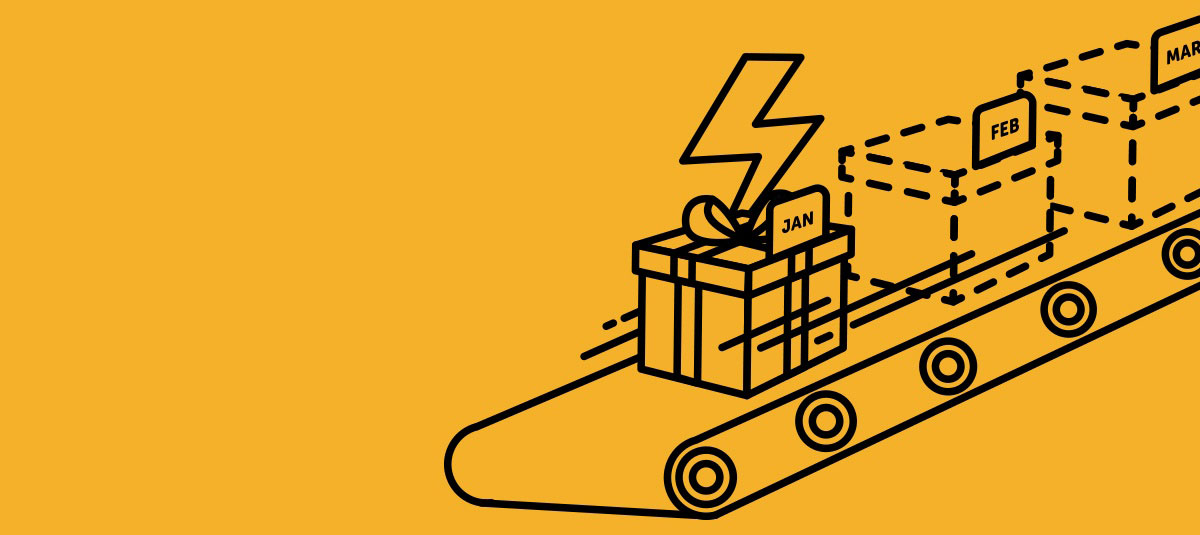How to Take Your Recurring Donation Strategy to the Next Level

Request a Demo
Learn how top nonprofits use Classy to power their fundraising.
As Team Rubicon touched upon in their recent blog post, recurring revenue programs have proven to have enormous impact and they are critical to your fundraising strategy. Salesforce has been around for 15 years now and a lot has changed in that timeframe. Donor’s behaviors and expectations are not what were 15 years ago, and they want a different type of a relationship then in the past. They want an ongoing relationship as a sustainer – they want to be engaged.
Recent research from Classy says first-time donors have a 30-45% retention rate, as opposed to 70% retention with recurring donors. In other words, the same donation amount the first year (5000 people who donate once at $240 or 12 times at $20) will over time result in either $2MM or almost $5MM after ten years. You can’t afford to not consider recurring donations.
You need a well-thought out marketing and communications strategy to retain those awesome monthly donors. Here are a few of the biggest changes we’ve noticed and some actionable strategies your nonprofit can adopt to manage a recurring donors program by applying great new tactics using a CRM like Salesforce.
Change #1: Purchasing behavior
Old: Not so long ago, people saved for Christmas and major purchases. Fundraising strategy capitalized on this by pushing everyone to donate through an annual year-end campaign.
New: In the past five years or so, consumers have moved almost completely towards the subscription model. People now expect that purchases like mobile phone calling plans , Netflix, and business applications like Salesforce.com will be channeled thorugh smaller budgeted payments on a recurring basis.
What to do: Match your fundraising strategy with your donor’s new behavior by creating sustainers, or subscribers. How to do this? Treat your audience like they are part of something: your fundraising call-to-action should fit in with their lives so they feel like they are participating in something. Through CRM-integration, you can easily schedule regular reminders.
You can also target messaging specifically to different segments of your donor base – for example if someone originally donated through Facebook, they may respond better to social media campaigns than email. Like Netflix, once your donor base gets used to smaller recurring donations, it will become an unconscious part of their budget.
Change #2: Your database is a whole new world
Old: Many nonprofits still operate on a “back office” model with manual data entry and after-the-fact monthly or quarterly reports to meet board demands.
New: CRMs today operate on a “front office” model where you live in the system. Your online donations, constituent interactions, phone calls, emails and meetings are all integrated into the system in real or near-real time.
What to do: Invest in integrating your online fundraising, email and social media into your CRM. This will transform your database into a living and breathing system. You learn something about your donors’ preferences each time they interact with you, such as what time of day/week/year they donate and what platform they prefer to donate through. You have always had powerful personal relationships with your top donors, and this relationship view has to be reflected in your CRM as well.
Every time you interact with your donor you should make sure it’s reflected in your CRM, and you can build these identities quickly through demographic surveys if you’re starting from scratch. Companies like Classy have thought long and hard about the best workflow for this process, so if you sign on with them you will be in good hands. Many nonprofits have made the transition from spreadsheets to Salesforce and any consulting firm worth their salt can help you through this process.
Change #3: Donor reaction time
Old: Segmenting your donor database to identify a hot button topic and targeting the appeal letters accordingly used to be a good guess at best.
New: You can now leverage CRM integrated systems to segment prospects in real time for more agile fundraising appeals.
What to do: Consider how segmenting your donors can allow for just-in-time fundraising appeals. Through your CRM you can keep reports in real-time about every aspect of each donor’s history, from amount to geographic area to type of appeal they respond best to. You can then use mass email marketing to deliver custom messages to different segments. A/B testing is great for this sort of appeal – try using two different messages on the same segment and see what type of messaging works best.
In summary, there are many ways your CRM can help you maximize the impact of recurring donations. Check out this presentation about recurring donation programs, made in conjunction with Team Rubicon and Classy, for more inspiration.
 By John Licata
By John Licata
John Licata is the Director of Client Insights and Satisfaction at Idealist Consulting and has over 12 years experience working with Salesforce.com.

The Quick Start Guide to Recurring Giving
Subscribe to the Classy Blog
Get the latest fundraising tips, trends, and ideas in your inbox.
Thank you for subscribing
You signed up for emails from Classy
Request a Demo
Learn how top nonprofits use Classy to power their fundraising.
 Explore Classy.org
Explore Classy.org 

